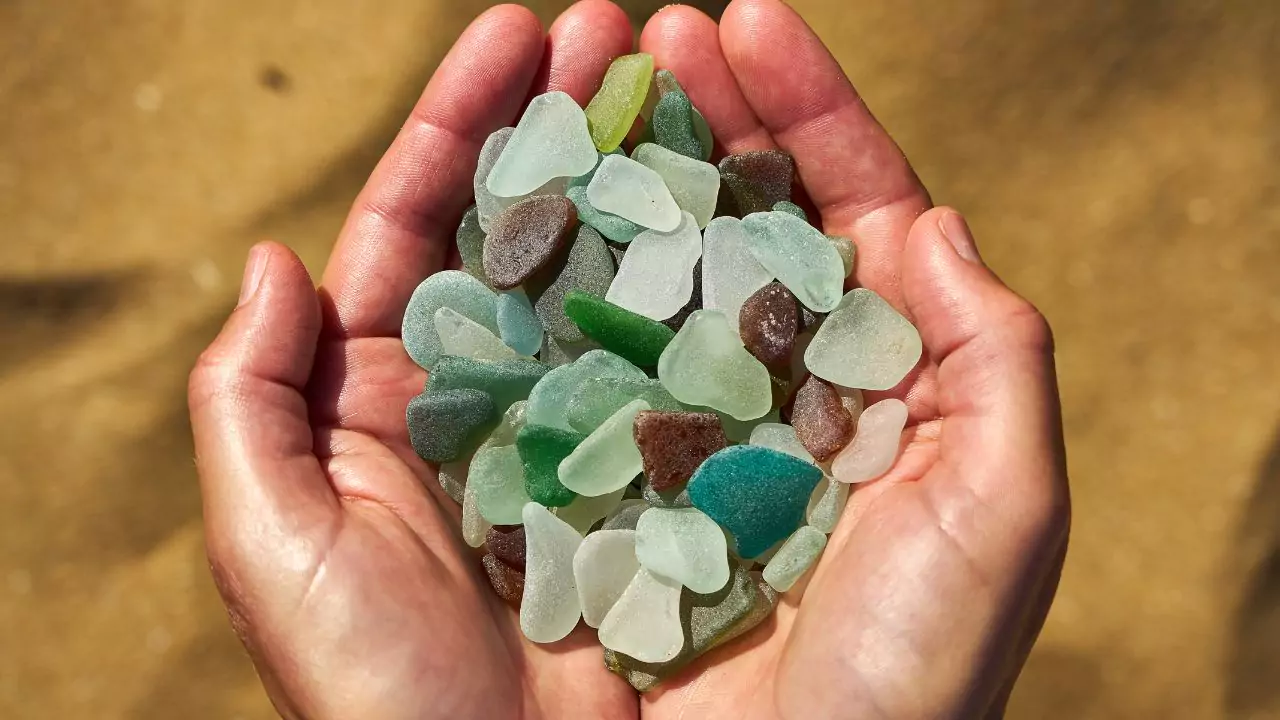Sea glass is formed when pieces of glass from broken bottles, dishes, or other glass objects are smoothed and frosted by the ocean. Waves, sand, rocks, and other natural forces wear down and polish discarded glass into beautiful, miniature gems. Sea glass can be found on beaches across the world, offering an exciting treasure hunt for beachcombers.
This article will explore what sea glass is, where to find it, and techniques for collecting and identifying genuine sea glass.
What is Sea Glass?
Sea glass refers to fragments of glass that have been weathered and smoothed by the ocean or freshwater sources like lakes and rivers over many years. The continual tumbling in rough water wears down the sharp edges of broken glass into frosted, rounded shapes.
Sea glass varies widely in color, size, thickness, and texture based on its former life as part of bottles, dishware, or other utilitarian objects. Common colors include kelly green from vintage soda bottles, brown from beer bottles, and aqua blue from medicine bottles. More rare colors include reds, oranges, yellows, and icy lavender or white.
Sea glass forms through a complex chemical and physical process. The original glass begins to frost and erode when exposed to water, abrasive rocks, sand, and the sun’s rays. The frosted patina is formed by the leaching of minerals from the glass into the seawater. Many pieces reveal bubbles, imperfections, or marks that provide clues to their manufacturing origins and history.
Where to Find Sea Glass?
The best places to search for sea glass are along ocean coastlines or beaches near the point where rivers flow into the sea. Ideal beach conditions include a wet, pebbly, or rocky shoreline where the glass can become abraded and washed around.
Some well-known sea glass beaches are Fort Bragg, California; Kauai’s Glass Beach in Hawaii; Bermuda; Prince Edward Island in Canada; and beaches along the Great Lakes. However, keep in mind that the popularity of these spots means much competition. Don’t overlook smaller, lesser-known beaches in your area.
Timing your beach visit to low tide after a storm is ideal to increase your chances of sea glass hunting success. Storms push new pieces of sea glass onto shore while low tide exposes more pebbles and sand on the beach. Early morning hours also tend to be best as fewer people are around.
Techniques for Collecting Sea Glass
When exploring a beach for the first time, take time to read the shoreline and identify spots where sea glass is most likely to collect. Focus your search around rocks, pebbles, jetties, and other structures that provide sea glass some protection against the pounding surf.
Natural rows and piles of tidal debris often accumulate sea glass so methodically scan these spots. Avoid digging as this stirs up murky sand. Instead, concentrate on glass pieces visible on the surface. Be patient and comb through debris slowly and thoroughly.
Bring a scoop or sifter to assist if allowed on the beach. A kitchen strainer or shovel with holes works well for sifting. A garden scoop helps dig through pebbles. If picking up sea glass by hand, carry a zipper bag or hard plastic container to protect the glass from scratches.
Only collect what is necessary, and leave some behind for others’ enjoyment. Never remove sea glass from protected beaches or parks where it is prohibited. Take photos to capture ephemeral works of sea glass art before the next tide arrives.
Identifying and Preserving Sea Glass
Authentic sea glass has a frosted, weathered look, rounded edges, and a natural sheen or patina. Fake sea glass appears cleaner, with more transparent coloring and sharper edges. Genuine sea glass also exhibits various surface imperfections that add to its beauty.
Ideally, carefully transfer any found sea glass into a zipper bag for transport. Select a dedicated container with a soft liner to store your collected sea glass, away from other hard objects. Distilled water removes any salt residue or dirt without damaging the frosted patina.
Avoid harsh cleaning methods. Never use chemicals, wire brushes or abrasive scrubbing. This destroys the aged look and frosted texture that make sea glass special. Gently wipe each piece with a soft cloth only if needed.
With its timeless, watery beauty, sea glass connects us to nature’s powerful ability to transform ordinary materials into extraordinary gems waiting to be uncovered. Follow these tips and you may uncover some special pieces to add to your sea glass collection.



